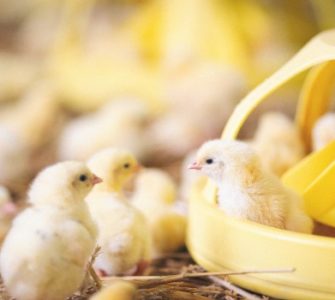Two years of IBV sampling underlines importance of surveillance work
Large-scale collection of samples from producers across the southern US is helping shed new light on infectious bronchitis virus (IBV) in chicken flocks — including uncovering a new serotype of the pathogen.
The 2-year surveillance project, led by Brian Jordan, associate professor at the University of Georgia, began as an effort to try to understand which bronchitis viruses were normally circulating in broiler flocks.
“We started the project a couple years ago, when we were dealing with the DMV/1639 variant. The last few variants that have occurred in the industry kind of sneaked up on us without us really knowing what’s out there,” Jordan explained.
“The goal of this project was to try to gather as much information as we could from clinically healthy flocks, but also sick flocks as well, to try to understand what the bronchitis population was.
“We also wanted to see if we would be able to develop a data set that would allow us to try to be a little bit more predictive in when the next variant may occur, or if the next variant was on the horizon.”
Despite a break in surveillance due to the Covid-19 pandemic, between 5,000 and 6,000 samples were collected from flocks across the Southeast, the Mid-South and Midwest. Eventually, the collection broadened in scope to include layers and breeders as well as broilers.
Genetic testing reveals new IBV serotype
Using polymerase chain reaction (PCR) testing allowed the researchers to detect all of the serotypes that are currently circulating or have been predominant in the past, including DMV/1639, while another test gave a generic “yes” or “no” answer on bronchitis infection. Following the generic test, samples could be further screened to see if it was a strain not previously observed.
A new IBV serotype was detected over the course of the work, after a generic bronchitis PCR assay was positive, but assays detecting individual known serotypes came out negative. Sequencing of the virus’s spike gene confirmed it to be novel.
Later samples showed a similar trend of positive generic tests and negative against known serotypes. These findings have inspired further work, Jordan said.
“I’m starting a big project this summer to go through these samples and try to type them genetically and see if this variant we detected [in 2020] is the predominant one, or if this a function of bronchitis, where we have a lot of different genetic populations circulating at the same time, and just every once in a while one becomes the predominant later on,” he explained.
Cross-checking with colleagues around the country revealed that similar genetic sequences have been identified across a wide geographic range, though Jordan believes there’s no cause for alarm.
“We’re still trying to evaluate if it’s actually a new variant causing disease, or if it’s just one of these hodgepodge of bronchitis genomes that are floating around out there in our populations,” he stressed.
Why up-to-date farm records help
While the work has shed light on the large amount of bronchitis that is in circulation at all times, producers can take steps to manage the risk.
“If you can create your own database within a company and say, ‘okay, traditionally, this is the challenge that we have, these are the vaccines that we have,’ then you have a good baseline,” Jordan said.
“If that shifts and you’re seeing a different virus in the field, even if you’re not seeing production issues yet, you may be able to be again a little bit more predictive in what kind of vaccine program change you may want to issue or what kind of production performance standards you want to change.”
The amount of data collected from producers has been a source of great satisfaction to the researchers, Jordan added, but for even more widespread sampling, analysis methods may need to change.
“The issue with PCR is that it can be expensive. So, in addition to doing all of this surveillance and evaluating this data, we’re also trying to determine if there is a better way that we can do these kinds of sampling, analysis and testing so that it becomes cost effective enough to really incentivize producers to send the samples in.”
More monitoring won’t necessarily result in a need for changes to vaccination programs, he stressed, but having farm data at hand will help if a decision is made to do something different.
“You can evaluate that change compared to the way it was before, because you’ve got all of that historical information. You can really make that comparison to say, ‘OK, well, this change improves my flock, it reduced the field challenges that we have, or it didn’t’ — then you can decide where to go from there,” he added.
Posted on August 3, 2021

















